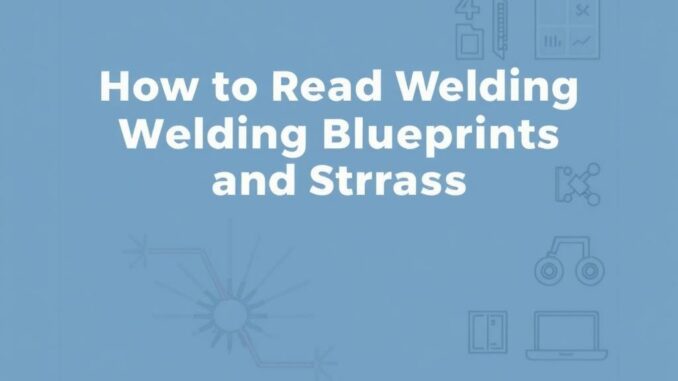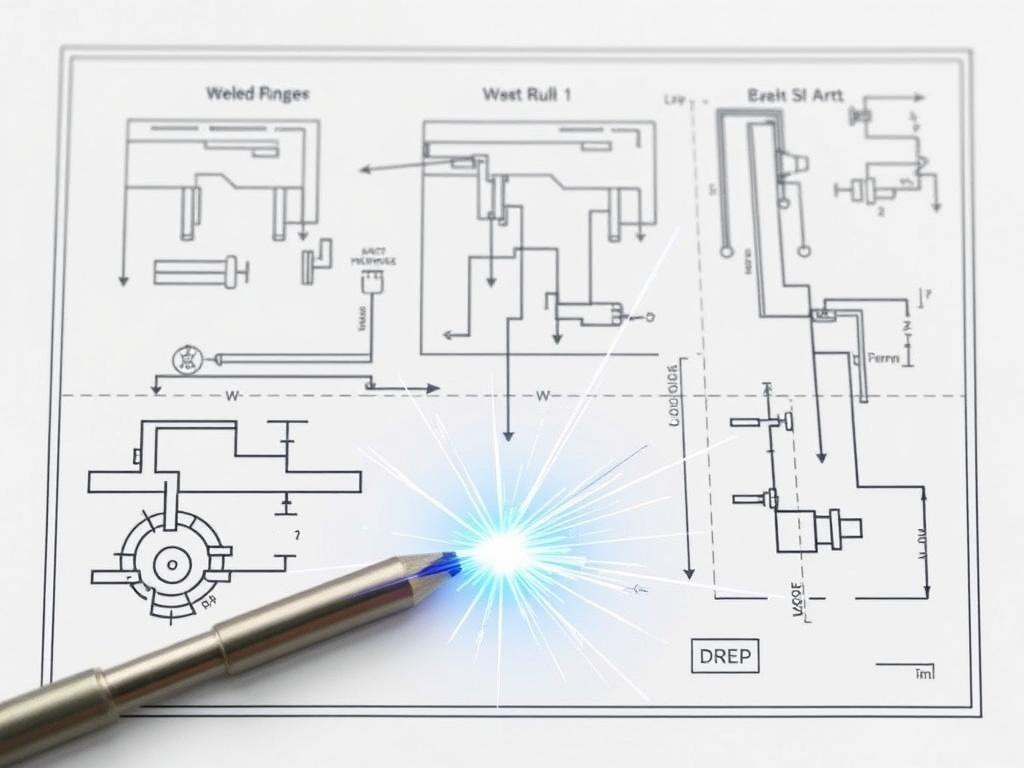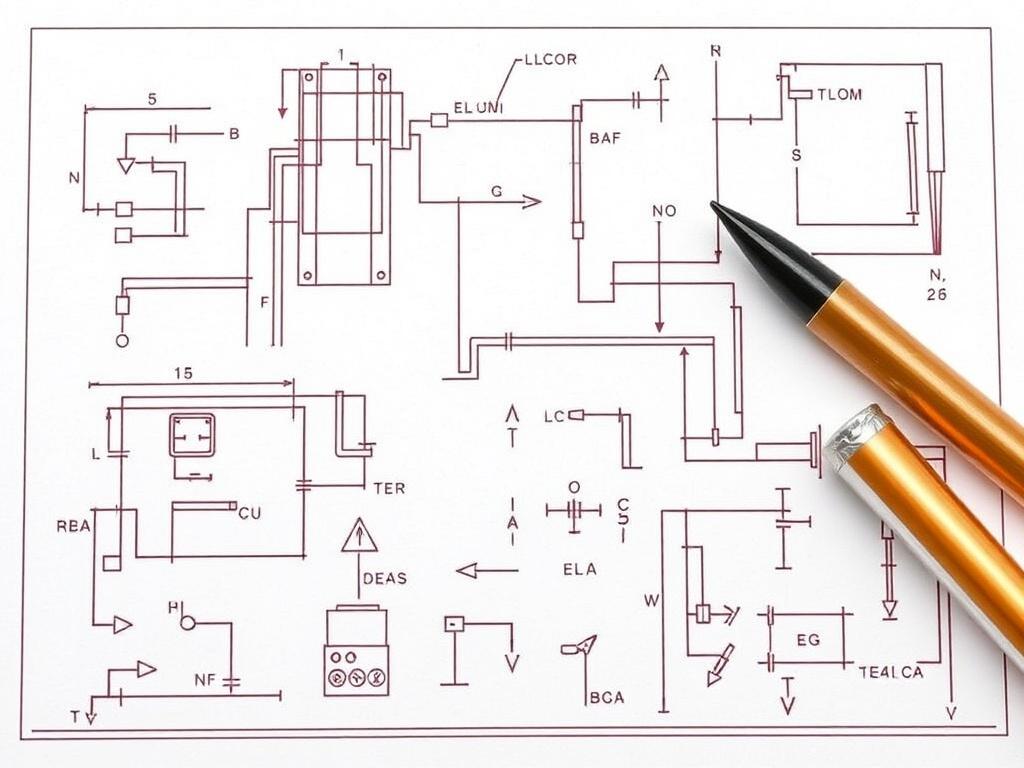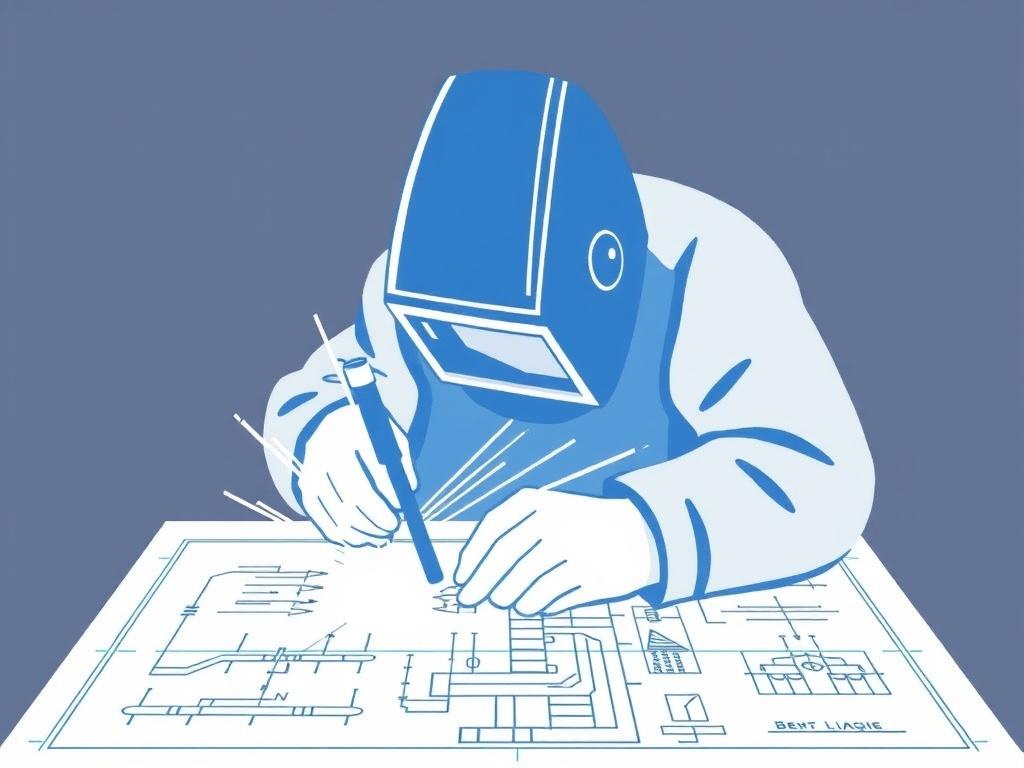
Welding is an intricate, skilled trade that relies heavily on precision and accuracy. One of the essential skills for any welder—whether you’re just starting out or a seasoned professional—is the ability to read welding blueprints and symbols effectively. Understanding these blueprints ensures that the welds you create meet the design requirements, safety standards, and structural integrity needed in the final product.
In this extensive guide, we’ll walk you through everything you need to know about reading welding blueprints and symbols. From basic concepts and terminology to detailed interpretations of various welding symbols, this article aims to equip you with the knowledge and confidence to tackle any welding blueprint you encounter.
Why Is It Important to Learn How to Read Welding Blueprints and Symbols?
Imagine being handed a complex welding job without clear instructions—this is exactly what a welding blueprint is meant to prevent. It communicates crucial information about the joint, type of weld, dimensions, and other specifications that a welder must follow. If you don’t understand how to read welding blueprints, you risk producing faulty welds that can lead to structural failures or costly rework.
Understanding welding blueprints and symbols helps:
- Ensure accuracy: Every weld needs to be precise and consistent. Blueprints provide exact measurements and instructions to follow.
- Enhance communication: Blueprints serve as a universal language between engineers, designers, and welders.
- Improve efficiency: Knowing how to read a blueprint reduces confusion and errors, saving time and money.
- Maintain safety: Properly executed welds ensure the finished structure can withstand the intended loads and stresses.
Whether you’re prepping for a certification exam, joining a new welding team, or simply want to sharpen your skills, learning to read welding blueprints and symbols is foundational.
What are Welding Blueprints?
Before diving into the symbols, it’s important to understand what a welding blueprint actually is. A welding blueprint is a detailed drawing that shows how the welded part should be fabricated and assembled. It includes specifications about the materials, joints, weld types, finish, and dimensions. These blueprints are often part of a larger set of engineering drawings.
They typically include:
| Component | Description |
|---|---|
| Material specifications | Details about the type and grade of metal to be used. |
| Weld joint type | Indicates the style of joint, such as butt, lap, corner, edge, or tee. |
| Weld size and length | Precise measurements for the weld bead. |
| Weld symbol | Graphical representation showing the type and location of welds. |
| Tolerances | Allowed variations in dimensions. |
| Finish and other notes | Additional instructions for grinding, shaping, or surface treatment. |
Understanding these components helps you interpret the blueprint effectively and follow the design intent.
Basic Terminology You Should Know
Before interpreting symbols and diagrams, familiarize yourself with common welding terms that frequently appear on blueprints:
- Weld Face: The exposed or visible surface of the finished weld.
- Weld Root: The point where two pieces of metal first make contact at the joint, often on the underside of the weld.
- Weld Groove: The prepared area where welding will occur, created by beveling or shaping the edges.
- Fillet Weld: A triangular weld connecting two surfaces at approximately right angles to each other.
- Groove Weld: Welds made in the groove between two surfaces.
- Joint:** The point or location where two or more pieces meet.
- Thickness: Refers to the thickness of base metal or filler material.
Being comfortable with this terminology is the first step toward proficiently reading welding blueprints and symbols.
Understanding Welding Symbols: The Language of Blueprints
Welding symbols are standardized graphical representations that describe the type, size, and other characteristics of a weld. According to the American Welding Society (AWS) and ISO standards, these symbols are designed to communicate complex welding instructions in a simple, visual format.
Here’s what makes up a typical welding symbol:
- Reference Line: The horizontal line where all other symbol elements are attached.
- Arrow: Points to the joint or location where the weld is to be applied.
- Arrow Side and Other Side: Welds can be specified on either the side the arrow points to or the opposite side.
- Basic Weld Symbol: Graphical representation like fillet, groove, plug, slot welds, etc.
- Dimensions and Other Data: Numbers indicating weld size, length, pitch, or contour.
- Tail: Optional and used for additional information such as welding process, specifications, or welding procedure.
Once you become familiar with this structure, you can easily decode any welding symbol you come across.
Common Welding Symbols and Their Meanings
| Symbol | Type of Weld | Description |
|---|---|---|
| ▲ (Triangle) | Fillet Weld | Triangular weld used in lap, corner, or tee joints. |
| ≡ (Square) | Square Groove Weld | Weld on square joint edges without groove preparation. |
| / (Single Bevel) | Bevel Groove Weld | Weld made where one edge is beveled and the other is square. |
| V | V-Groove Weld | Weld on joint with both edges beveled to form a “V”. |
| U | U-Groove Weld | Weld made in a groove shaped like the letter U for thicker materials. |
| J | J-Groove Weld | Weld on joint where one edge is shaped like the letter J. |
| ○ | Spot or Projection Weld | Weld applied to a localized area, usually in sheet metal. |
Step-by-Step Guide on Reading Welding Blueprints and Symbols

Now that you know the basics, let’s walk through a step-by-step approach to reading welding blueprints and symbols effectively.
Step 1: Identify the Joint Type
Start by locating the joint type specified in the blueprint. Is it a butt joint, lap joint, corner joint, tee joint, or edge joint? This is critical because different weld symbols correspond to different joint types. Look closely at the pictorial or schematic representations of the joint to understand how parts fit together.
Step 2: Locate the Reference Line and Arrow
The welding symbol’s reference line indicates the basic information and dimensions of the weld. The arrow points to the exact location where the weld is to be applied. Pay attention to which side of the joint the arrow points to, as welds may be on the “arrow side,” “other side,” or both.
Step 3: Interpret the Basic Weld Symbol
Identify the symbol on or adjacent to the reference line. This will tell you the type of weld required – whether it’s a fillet weld (triangle), groove weld (V, U, J), spot weld (circle), or another type.
Step 4: Understand the Weld Dimensions
The numbers placed near the weld symbol represent crucial measurements such as weld size (leg length for fillet welds), length of the weld, and pitch (distance between welds). It’s important to understand these values to produce the weld that matches the engineering requirements.
Step 5: Review Additional Symbols or Notes
Some symbols indicate specific weld contour instructions such as flush, convex, or concave weld profile. The tail of the symbol may contain letters or codes referring to the welding procedure, process (SMAW, TIG, MIG), or specification standards you must follow.
Step 6: Confirm Material and Other Requirements
Double-check the blueprint for material specifications, tolerances, and other finishing instructions courtesy of the additional notes. These details affect the entire welding process and final outcome.
Examples of Welding Symbols in Practice
Let’s walk through some practical examples to see how welding symbols are read and applied.
| Symbol Example | Meaning | Action as a Welder |
|---|---|---|
| Arrow pointing to a fillet weld symbol (triangle), number “6” below the line. | Fillet weld on the arrow side with a leg size of 6 mm. | Prepare a 6 mm fillet weld on the indicated joint side. |
| V groove weld symbol with 10 (size) and 50 (length) numbers beside it. | V groove weld with a 10 mm groove size and 50 mm weld length. | Make a V groove weld 10 mm deep and 50 mm long. |
| Circle symbol on the arrow side with letter “M” in the tail. | Spot weld (circle) using the Mig welding process (M). | Use MIG welding to produce the spot weld at specified locations. |
Tips for Beginners on How to Read Welding Blueprints and Symbols
Learning to read welding blueprints and symbols may seem intimidating at first, but these tips can make your learning process smoother and faster:
- Start with the basics: Focus on common weld types and symbols before tackling more advanced ones.
- Use standard reference guides: Keep an AWS welding symbol chart handy for quick reference.
- Practice decoding real blueprints: Seek out sample drawings and practice identifying symbols and information.
- Take notes and sketches: Draw joint layouts and weld positions to visualize the work.
- Ask questions: Don’t hesitate to clarify confusing symbols or instructions with supervisors or engineers.
- Stay updated: Different countries and industries might have variations in symbols; familiarize yourself with the standard followed in your workplace.
Common Mistakes to Avoid When Reading Welding Blueprints and Symbols

Despite best intentions, many welders encounter pitfalls when learning to read welding blueprints. Here are the most common mistakes and how to avoid them:
- Ignoring the arrow side vs. other side distinction: Always check which side the weld is specified on. Applying the weld on the wrong side can jeopardize the entire project.
- Misinterpreting weld sizes: Confusing the weld’s leg length or depth with the weld length can lead to undersized welds.
- Overlooking additional notes or tail information: The tail may contain critical info like welding process or inspection requirements.
- Failing to check material specifications: The weld size and technique can vary based on materials used.
- Not verifying tolerances and finish: Ignoring tolerances can cause dimensional issues, and finish instructions affect the weld’s strength and appearance.
Helpful Resources for Mastering Welding Blueprints and Symbols
If you want to take your skills further, here are some excellent resources:
- American Welding Society (AWS) Website – Official standards and training materials.
- ISO Welding Standards – International symbol and blueprint standards.
- Welding Tips and Tricks – Educational videos and tutorials.
- Miller Welding Symbols Guide – Simple charts and explanations.
- Technical manuals and textbooks such as: Welding Symbols on Drawings by AWS.
Conclusion: Reading Welding Blueprints and Symbols with Confidence

Mastering how to read welding blueprints and symbols is a game-changer in your welding career. It bridges the gap between engineering design and actual fabrication, ensuring your welds are precise, safe, and up to standard. With practice, the initially complex language of symbols and drawings becomes second nature. Remember to approach each blueprint systematically, understand the symbols fully, and never hesitate to ask questions or seek clarification.
Welding is both science and art—and blueprints are the roadmap that guides your craftsmanship. Embrace this knowledge, and you’ll build stronger, safer, and more dependable structures with every weld.
Happy welding and reading those blueprints with confidence!
